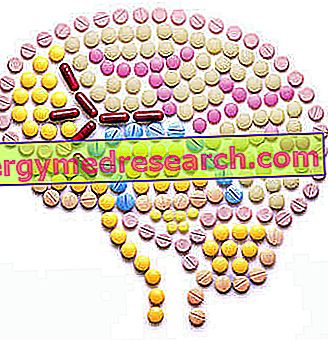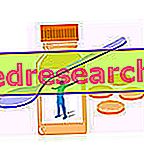Related articles: Attention deficit hyperactivity disorder (ADHD)
Definition
Attention deficit hyperactivity disorder is a neuropsychic disorder that affects child and adolescent development. This disorder does not recognize a single specific cause; the origin appears to be multifactorial and depends on the interaction of environmental, social-behavioral, biochemical and genetic factors. Some studies, in particular, have shown the expression of genes that control the level of dopaminergic and noradrenergic neurotransmitters.
Furthermore, attention deficit hyperactivity disorder tends to recur within the same family. Among the environmental factors, however, cigarette smoking and alcohol abuse in pregnancy, low birth weight (or premature birth) and neurological damage reported after obstetric or cranial trauma seem to be implicated. Exposure to paints, pesticides, lead and certain food additives (colorings and preservatives) can also increase the risk.
Most common symptoms and signs *
- Aggression
- Stuttering
- Impulsive behavior
- Depression
- Learning difficulties
- Difficulty concentrating
- dysgraphia
- dysorthography
- Mood disorders
- Nervous breakdown
- Insomnia
- logorrhea
- Nervousness
Further indications
The onset of attention deficit hyperactivity disorder always occurs before 7 years of age.
The symptomatology of the disorder is represented by inattention, hyperactivity and impulsiveness, more evident than expected for a child of equal development. Depending on whether one of these characters prevails, in particular, it is possible to distinguish three variants of the disorder: inattentive, hyperactive-impulsive and combined form.
Children with attention deficit hyperactivity disorder have difficulty concentrating on an activity, do not pay attention to details and are easily distracted. Inattention also manifests itself in the inability to follow a conversation for a prolonged time and in the difficulty of learning, following instructions or completing a required task. The child forgets things, seems absent and gets bored quickly for an activity, so he frequently goes on to something else.
Furthermore, in attention deficit hyperactivity disorder, there is a series of behaviors that denote hyperactivity and impulsivity. The children move continuously, they cannot sit, they touch everything they find, they are restless and do not reflect on the consequences of their gesture or their words. Furthermore, excesses of anger, aggression, antisocial behavior, sleep disturbances, anxiety, depression and mood swings can occur.
Attention deficit hyperactivity disorder influences academic performance, the ability to develop appropriate social behavior, and thinking and reasoning strategies. Difficulties in social and emotional relationships can persist into adulthood.
In some cases, non-specific neurological deficits, sensitive dysfunctions and motor embarrassment may also be present.
The diagnosis is made through medical evaluation and the satisfaction of some clinical criteria. To define attention deficit hyperactivity disorder, symptoms must manifest themselves for 6 consecutive months, in at least 2 different life contexts (eg at home and at school).
The evaluation of educational, mental and developmental aspects aims to identify the potentially treatable conditions that contribute to the symptoms. The treatment of ADHD is based on the use of specific drugs (methylphenidate and atomoxetine) associated with behavioral therapies and psycho-educational interventions.



